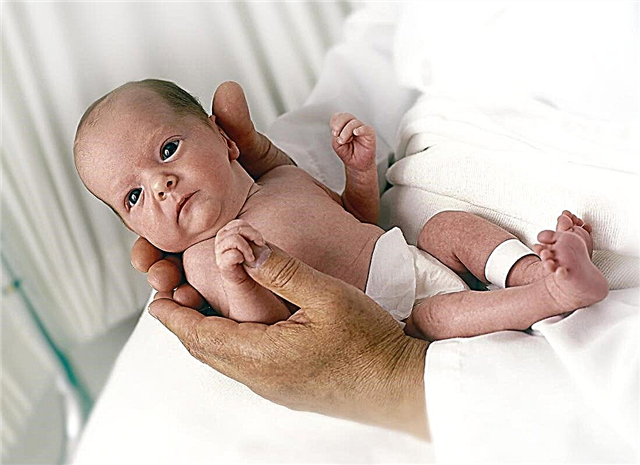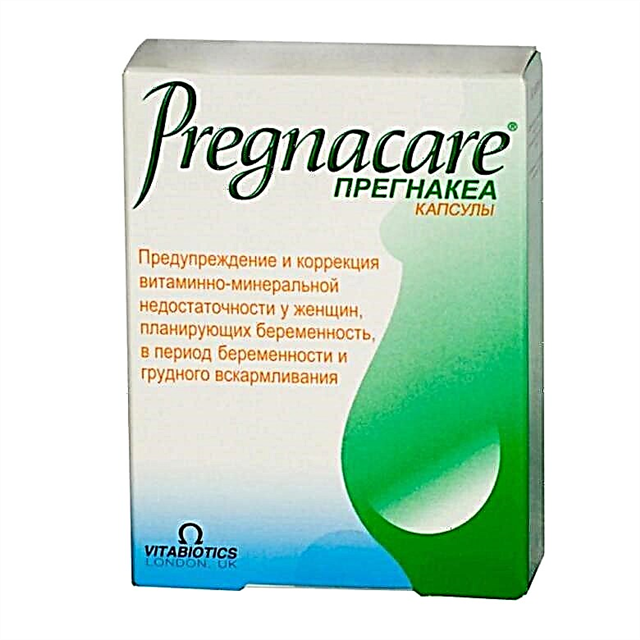
Often women find it difficult to determine ovulation, not only because they cannot navigate the calculations, but also because they do not feel anything unusual at all during this period. And for a long time it was believed that the absence of unpleasant sensations is the norm. But in recent years, doctors have reconsidered their attitude to female sensations in the middle of the cycle and admitted the possibility of the presence of some unpleasant symptoms, which they combined into one concept - ovulatory syndrome.

What it is?
The ovulation period is an important stage in the female cycle, the time for the release of a mature egg from the follicle bubble on the surface of the gonad (ovary). The processes are microscopic, which gave reason for a long time to believe that it is impossible to feel ovulation. In practice, many women claim that they feel the period of ovulation, and some determine it by their own feelings with an accuracy of the day, which eliminates the need to use ovulation tests, measure basal temperature.
Ovulatory syndrome includes several symptoms that theoretically can accompany the ovulation process, because during this period, albeit small, but still microtraumas occur (the follicle bursts and releases the egg, which is accompanied by the outpouring of a small amount of fluid from the bubble and blood from damaged blood vessels) ...
It is very important to clearly distinguish the syndrome inherent in ovulation from other ailments and pathologies, which exclusively coincide with the period of ovulation by the time of occurrence. For this, the doctors specified the concept of the syndrome and included in it signs that have a clear connection with the physiological processes during ovulation. In this way, sharp pain in the ear or vomiting cannot be considered a manifestation of ovulatory syndrome, since such symptoms cannot even in theory be interconnected with the process of rupture of the follicle on the surface of the sex gland.


It is distinguished from other ailments by the fact that every month it accompanies the release of the oocyte with enviable regularity, falls in the middle of the cycle and lasts no longer than one or two days after the day of ovulation. If the pain persists longer and began long before ovulation, then they most likely have nothing to do with it - the cause must be looked for in something else.
According to medical statistics, certain symptoms of the syndrome at least once in their life were felt by a good half of girls and women... In a fifth of women, the syndrome occurs systematically and regularly. Only 5% of the female population has ovulatory syndrome so pronounced that they are forced to give up their usual daily activities: having sex, going to work, studying.
It is believed that ovulatory syndrome occurs in women of a fairly wide age group - from 24 to 40–43 years. Even for those who have discomfort a couple of weeks before menstruation, they have a vivid picture and are repeated every month, they completely disappear with the advent of menopause.

Causes and prerequisites
The main reason for the appearance of pain usually lies in the very process of ovulation. In the first half of the cycle, after the end of menstruation, the level of the hormone FSH rises, which acts as a stimulating image on the follicles of the right and left ovaries. They start to grow. Within a few days, a dominant bubble stands out among them, which grows more intensively, and the rest undergo a reverse development.
By the middle of the cycle, the main follicle reaches its maximum size, estrogen and LH are more actively produced in the woman's body, this combination leads to the subtlety and stigma of the follicle membrane. The bubble bursts, a mature egg comes out, which is immediately picked up by the fallopian tubes, directing the oocyte towards the uterus with muscle contractions. At the site of the bursting bubble, the formation of the corpus luteum begins - the endocrine gland, which is responsible for the production of progesterone.
To understand how many days the ovulatory syndrome lasts, you should know that the ovulation process itself lasts no more than an hour, after which the egg cell remains viable for another 24 to 36 hours maximum. Before the follicle ruptures, there should be no discomfort. Thus, the manifestations of the syndrome are permissible on the day of ovulation and within 1-2 days after it.

If we talk about why it still hurts, then several completely natural reasons should be noted at once.
- Follicle growth and enlargement. The dominant follicle stretches the ovarian capsule during growth. It reaches its maximum stretch just before ovulation, when the bubble prepares to rupture.
- Break stage. The follicle membranes have their own nerve endings, and the ovarian membrane is also rich in them. When the bubble ruptures, excitation of neurons occurs, which is regarded by the centers of the brain as a pain impulse.
- Reduction of the fallopian tubes. After the oocyte is in the oviduct, it begins to contract, pushing the reproductive cell towards the uterine cavity. The oocyte cannot move independently. Short-term tensions of the musculature of the oviduct lead to vibration of the villi on its inner surface, and they push the reproductive cell forward.
- Peritoneal irritation... When the vesicle ruptures, both the oocyte and the liquid, which served as a nutrient medium for the maturation of the germ cell, are released from it. In addition, follicular membranes with their own network of blood vessels are injured, resulting in a small local hemorrhage. These fluids may cause slight local irritation.

Such physiological nuances occur in all women, but not all suffer from ovulation syndrome. Usually, women with an individual predisposition experience the period of egg release more painfully and with discomfort. The risk group includes women with a burdened gynecological history, cystic formations, adhesions remaining after surgery, who suffer from painful menstruation.
In all women experiencing ovulation syndrome, the central nervous system is easily excitable, they do not tolerate pain in general.
Symptoms
The most common sign of ovulation syndrome is lower abdominal pain. They are pulling, aching, like during menstruation, or slightly weaker, but they can be stronger. Quite rarely, the pain is acute. Many women complain that they also feel pain in the anus and lower back. More often, sensations are localized from a certain side (depending on the side of the location of the ovulated ovary). With double bilateral ovulation, soreness can be observed from both sides at once.
It has been noticed that unpleasant manifestations intensify when lifting a heavy one, with a sharp change in body position, when having sex.

Another possible sign of ovulation syndrome is the appearance of light brownish mucous secretions, as well as serous ones. They are associated with the outpouring of a small amount of blood from the damaged vessels of the follicular membrane into the abdominal cavity and usually go away after 1–2 days. Other manifestations of ovulation syndrome include:
- a slight increase in body temperature (more than 37.0 degrees, but not higher than 38.0 degrees);
- fatigue, feeling empty, intense sweating;
- mood swings, rampant emotions, tearfulness and irritability;
- trouble falling asleep;
- pain in the head (caused by a slight spasm of the cerebral vessels at the time of a sharp decrease in estrogen, which occurs when the follicle ruptures);
- engorgement in the chest - as a reaction of glandular tissue to a change in hormonal levels.
When the pain is intense, lasts more than 48 hours, atypical, localized not in the lower abdominal part, but in other parts of the body, if there is vomiting, rash, diarrhea, if a high temperature persists, this is not ovulation syndrome, but signs of other diseases and pathological conditions. You need to see a doctor.
Danger
The syndrome does not pose a great danger to the female body. It does not in any way affect her ability to bear children, carry, childbirth, cannot affect the rate of depletion of the ovarian reserve, does not lead to the development of gynecological diseases, does not affect the nature of the course of labor. Therefore, the presence of ovulatory syndrome can be attributed to to the individual characteristics of the organism.
At the same time, a very pronounced syndrome can significantly worsen a woman's life, because every month in the middle of the cycle she will have to postpone some important business, work, sports, give up intimate relationships with her beloved man just because she is not feeling well. This, according to experts, increases the likelihood of developing clinical depression.
It is not the syndrome itself that is dangerous, but its similarity with certain diseases that can disguise themselves under it, due to which the woman does not rush to the doctor, believing that this is a normal phenomenon for her. So, endometriosis, follicular cysts, as well as some tumors and neoplasms can remain undetected for a long time.


Treatment rules
Medicine does not know a single method of specific treatment for ovulation syndrome. And the treatment itself is not always required. If the symptoms do not restrict a woman's actions and do not interfere with her lead a normal life, then, by and large, nothing needs to be treated.
If poor health prevents her from living actively and for her pleasure in the middle of the cycle, then symptomatic drugs, the exact list of which depends on specific complaints. Usually, for pain in the abdomen, headaches, it is recommended to take anti-inflammatory drugs and drugs with an antispasmodic effect. A warm bath and a heating pad on the stomach help, but only on the condition that the woman does not have inflammation of the pelvic organs, because warming up can intensify the inflammatory process.
Experts do not recommend taking painkillers to women who are planning pregnancy, they are recommended antispasmodics. Also, the fair sex, suffering from unpleasant painful ovulation, is advised to limit physical activity during this period, not to have sex, unless, of course, there is no goal of conceiving a baby.
For those who do not intend to have children in the near future, oral contraceptives may be recommended, which suppress ovulation. This will provide both contraception and the absence of ovulatory pain.

Well-known drugs can help everyone with ovulation syndrome, like "No-Shpa", "Solpadein", "Ketorol", "Papaverine", "Mig", positive reviews about "Ibuprofen"... Women who are experiencing severe syndrome are advised visit a psychologist or psychotherapist, since in about every fifth case, the true cause of the syndrome lies in the psychosomatic state.
Women with ovulation syndrome are advised to monitor their cycle more closely. In advance of ovulation, you can start taking antispasmodics, this will prevent the appearance of unpleasant sensations during the release of the egg.
It also often helps to reduce the onset of symptoms by normalizing the lifestyle: adequate sleep, good and balanced nutrition.


See the following video for ovulatory syndrome.



